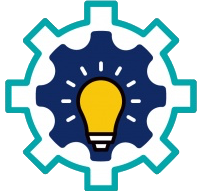Practical Shutdown and Turnaround Management
Details :
Planning and managing shutdowns, turnarounds and outages in
the process plant environment is a complex and demanding function. If
turnarounds are not properly planned, managed and controlled, companies run the
risks of serious budget overruns, costly schedule delays and negative impacts
on customers.
In this seminar, you will learn:
• How to
develop a practical shutdown strategy?
• Management
of all stages of the shutdown process
• Develop
the management plan, work plans, resource plans and budget
• How to
management related issues such as risk and safety
By the end of this course, delegates will be able
to:
- To
enhance the company’s turnaround management capabilities, and to ensure a
team approach in the planning and execution of plant shutdowns and
turnarounds
- Provide
a comprehensive understanding of effective turnaround management
techniques and implementation
- Create
awareness of planning methods and an integrated organisational approach in
the execution of successful turnarounds
- Develop
an action plan to improve their own shutdown management techniques
- Have a
much clearer understanding of their own and every other team members role
in ensuring a successful turnaround
The course would undoubtedly be of immense value and
interest to:
- Shutdown
or turnaround professionals and coordinators
- Planning/scheduling
and cost control staff
- Construction
superintendents and supervisors
- Operations
shutdown/outage coordinators
- Project
engineers and contract administrators
- Participation
from inspection, materials, safety and maintenance engineering
Day One:
Couplings - Types, Application & Operation
- Classification & Application
of Couplings
- Characteristics of Rigid
Couplings
- Characteristics of Flexible
Couplings
- Selection of Parameters of
Couplings for Pumps & Compressors and Turbines
- Advantages & Disadvantages
of Different Types
Day Two:
Couplings - Installation, Maintenance & Troubleshooting
- Installation Best Practices
& Safety Issues
- Coupling Inspection in Operation
- Vibration Monitoring and
Analysis
- Preventive Maintenance &
Condition Monitoring
- Failure Prevention &
Troubleshooting
Day
Three: Shaft Alignment Basics
- Need for shaft alignment
- Effects of shaft misalignment
- Types of misalignment: offset
and angularity
- Measuring techniques
- Rim and face alignment method:
TIR determination
Day Four:
Alignment Measurement Methods
- Reverse dial methodology
- Correcting misalignment:
foundation and soft foot
- Thermal growth determination
- Laser optic technique
- Misalignment detected by
vibration monitoring
Day Five:
Effect of Misalignment on Bearings & Seals
- Effect of misalignment of
bearings
- Vibration monitoring results as
indication of misalignment
- Effect of misalignment on seals
of pumps and compressors
- Leakage control & prevention
- Summary and conclusions
- All lectures are in colorful presentation
- All lectures are interspersed with interactive discussion
- All lectures include group discussion, case history and exercises
- Actual major incidents as well as industry experience are reviewed
- Participants receive a multicolor course manual
- Pictures of real incidents and case history are shown
- Videos on the subject are shown
09:00 to 15:00


